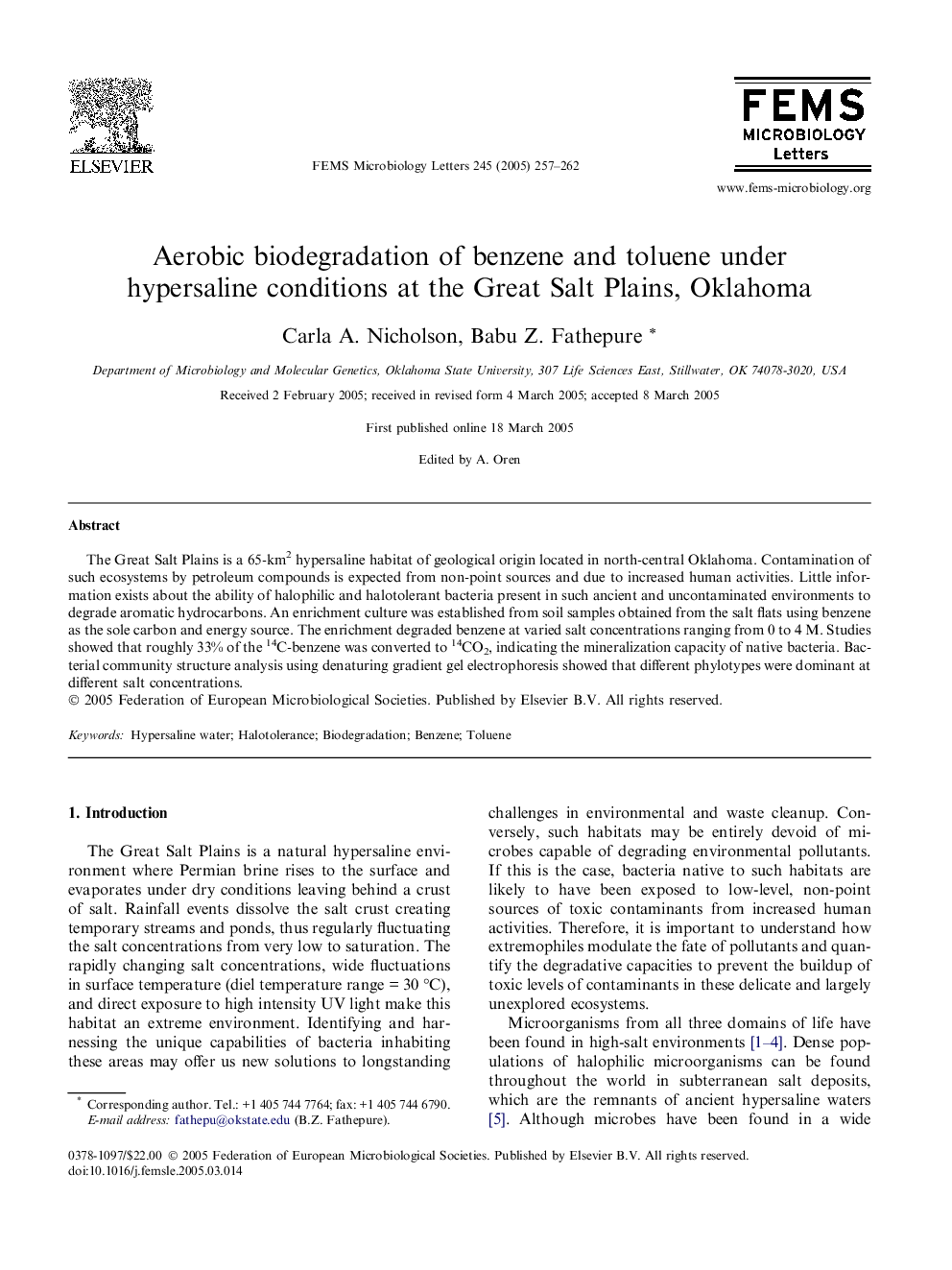| Article ID | Journal | Published Year | Pages | File Type |
|---|---|---|---|---|
| 9121700 | FEMS Microbiology Letters | 2005 | 6 Pages |
Abstract
The Great Salt Plains is a 65-km2 hypersaline habitat of geological origin located in north-central Oklahoma. Contamination of such ecosystems by petroleum compounds is expected from non-point sources and due to increased human activities. Little information exists about the ability of halophilic and halotolerant bacteria present in such ancient and uncontaminated environments to degrade aromatic hydrocarbons. An enrichment culture was established from soil samples obtained from the salt flats using benzene as the sole carbon and energy source. The enrichment degraded benzene at varied salt concentrations ranging from 0 to 4Â M. Studies showed that roughly 33% of the 14C-benzene was converted to 14CO2, indicating the mineralization capacity of native bacteria. Bacterial community structure analysis using denaturing gradient gel electrophoresis showed that different phylotypes were dominant at different salt concentrations.
Related Topics
Life Sciences
Biochemistry, Genetics and Molecular Biology
Genetics
Authors
Carla A. Nicholson, Babu Z. Fathepure,
